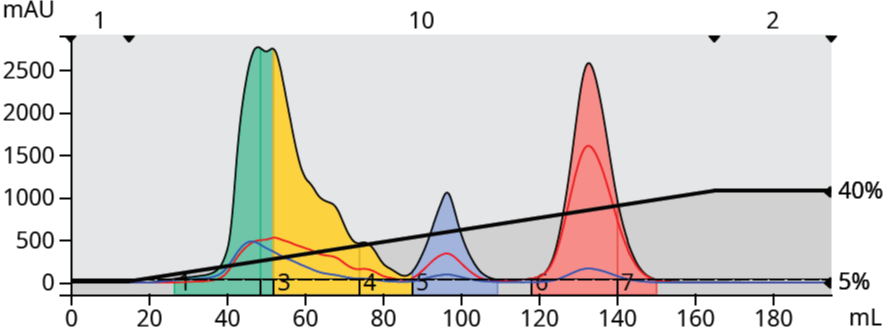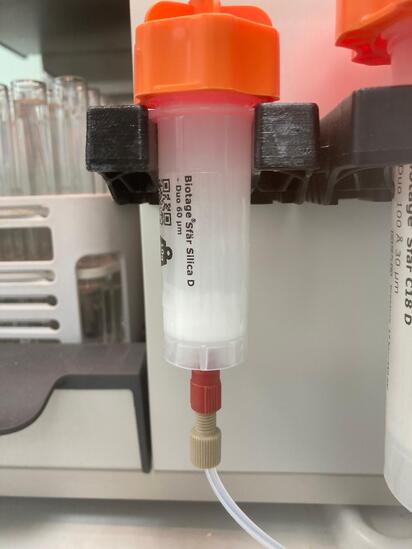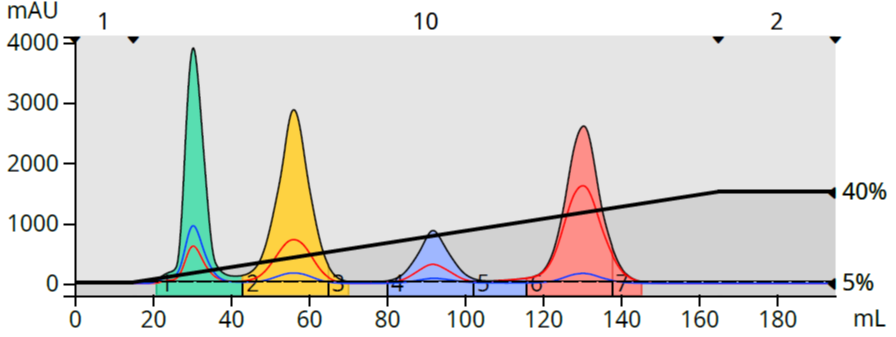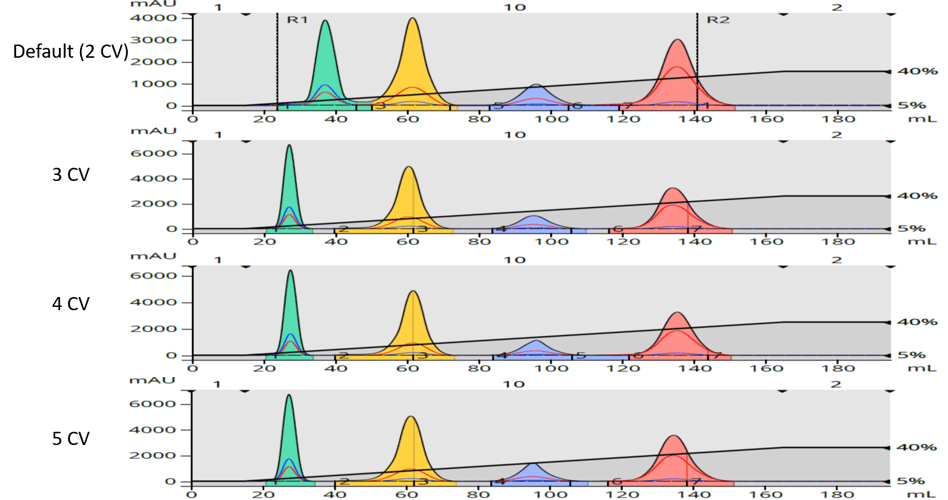Chemists using silica columns for normal-phase flash chromatography typically equilibrate their columns prior to loading their samples. Companies manufacturing automated flash purification systems often have the equilibration volume and flow rate pre-programmed and tied to a column size. Some of these flash system companies allow equilibration volume to be edited while others have the volume fixed. Is one of these options better than the others? In this post I discuss how equilibration volume impacts flash chromatography results.
First, though, let's answer the question - Why equilibrate the column? Well, with normal-phase flash chromatography, new columns are dry. This is true for pre-manufactured and hand-packed columns.
When solvent first makes contact with silica the solvent is adsorbed which causes an exothermic reaction, if you will, generating heat – sometimes substantial. The solvent-sorbent generated heat can negatively impact the resulting chromatography causing earlier than desired compound elution with little to no separation, especially for more lipophilic compounds, Figure 1.
 Figure 1. Impact of not equilibrating a silica column prior to sample loading and purification is co-elution of the first two eluting compounds (green/yellow) in this 4-component sample.
Figure 1. Impact of not equilibrating a silica column prior to sample loading and purification is co-elution of the first two eluting compounds (green/yellow) in this 4-component sample.
But how much solvent needs to pass through the column before it is equilibrated to the point where it is useable and reliable? As it turns out, only 2 column volumes (2 x the empty space in a packed column) is all that is necessary as will be shown in my experimental data. For this work I used my Biotage® Selekt system and 10-gram Biotage® Sfär silica columns (60 µm particle size).
As the Sr. Technical Specialist at Biotage I often am asked about equilibration volume with the concern that the column has not been completely wetted by the solvent, Figure 2.

Figure 2. Photo of a 10-g column after the default 2 CV equilibration step in the method. The bottom 20% of the column is not fully wet with solvent.
The Selekt system has standardized on a 2 CV equilibration volume for silica columns. For my 10-gram column, that means an equilibration volume of 30 mL (2 x 15 mL CV). Although 30 mL does not fully wet the column, it is enough to eliminate the generated heat and displaces the majority of the air in the column resulting in complete separation of each of the sample's four compounds, Figure 3.

Figure 3. Purification results after a 2 CV equilibration show complete separation of the sample's four components.
Increasing equilibration volume does not appear to have a major positive impact on the the results and actually forces the most hydrophobic compound to elute earlier than the 2 CV equilibration, Figure 4.

Figure 4. Comparison of chromatographic results after different equilibration volumes. From top to bottom 2 CV, 3 CV, 4 CV, 5 CV. With 2 CV all compounds are retained and separated. With 3 CV or more, the first peak elutes more quickly but all other retained compounds elute at repeatable volumes.
So, when it comes to column equilibration standard practices, there really is not a problem limiting the volume to 2 CV. Just because the bottom of the column appears dry, does not mean it is not ready for a sample.
Think about what happens after you load your sample on the partially wetted column. Your compound likely is going to be retained on the column so by the time is starts to move, enough solvent has passed through the column to wet the dry section. Only compounds with TLC Rf values > 0.8, as is the case with my sample's first eluting peak, are likely to be affected so save some time and money by equilibrating with just 2 CV of solvent!
Interested in learning more about flash chromatography? Download our white paper - Successful Flash Chromatography

 Organic Workflow
Organic Workflow Peptide Workflow
Peptide Workflow Scale-Up Flash Purification
Scale-Up Flash Purification  Sample Preparation
Sample Preparation Biomolecule Purification
Biomolecule Purification Oligo synthesis
Oligo synthesis Scavengers and Reagents
Scavengers and Reagents Service & Support
Service & Support Accessories & Spare parts
Accessories & Spare parts Investors
Investors Reports & News
Reports & News The Share
The Share Corporate Governance
Corporate Governance Calendar
Calendar Sustainability
Sustainability Our Offering
Our Offering Our History
Our History Our Locations
Our Locations Leadership
Leadership